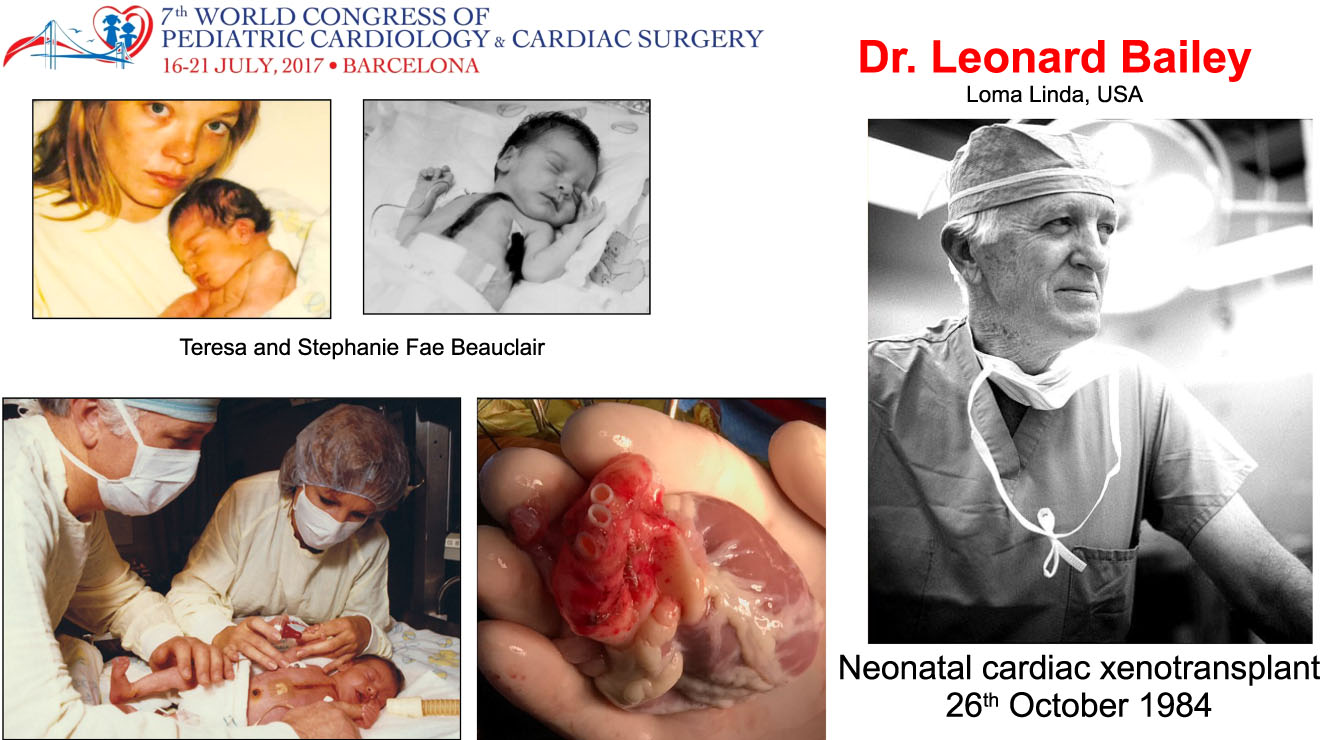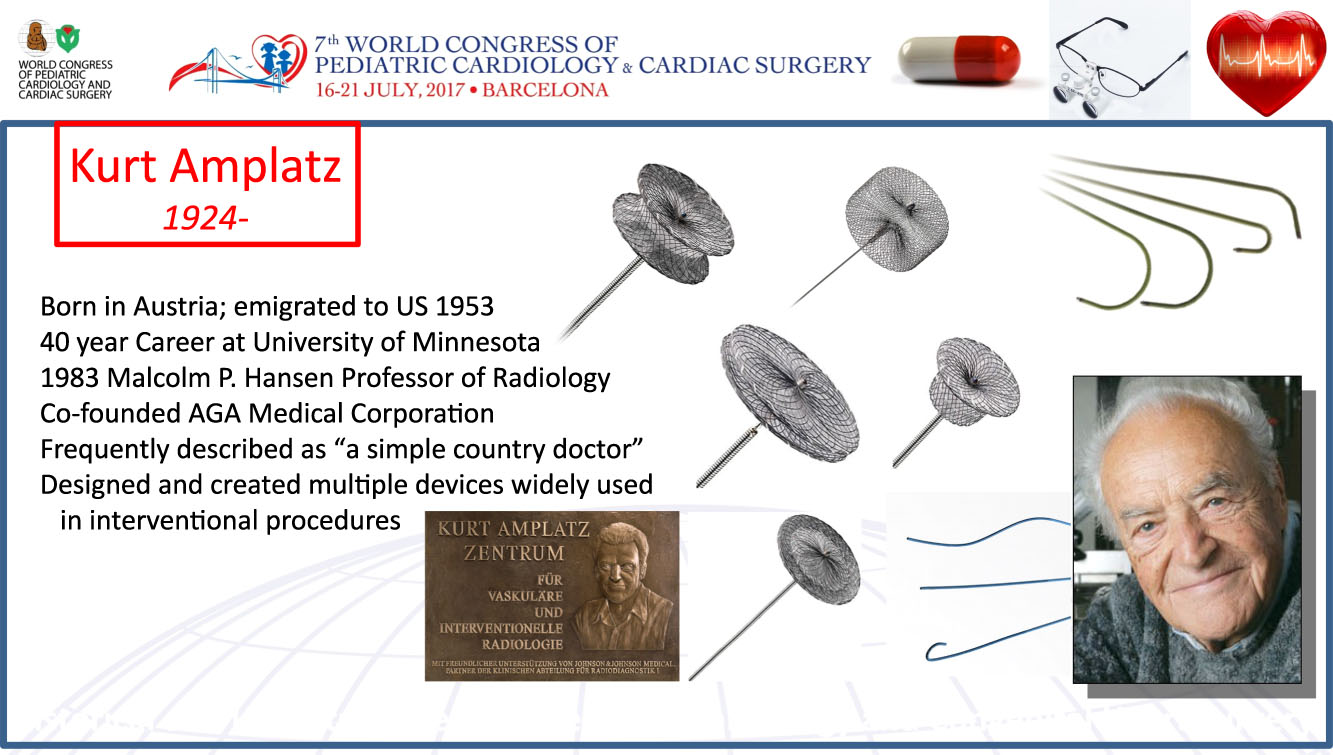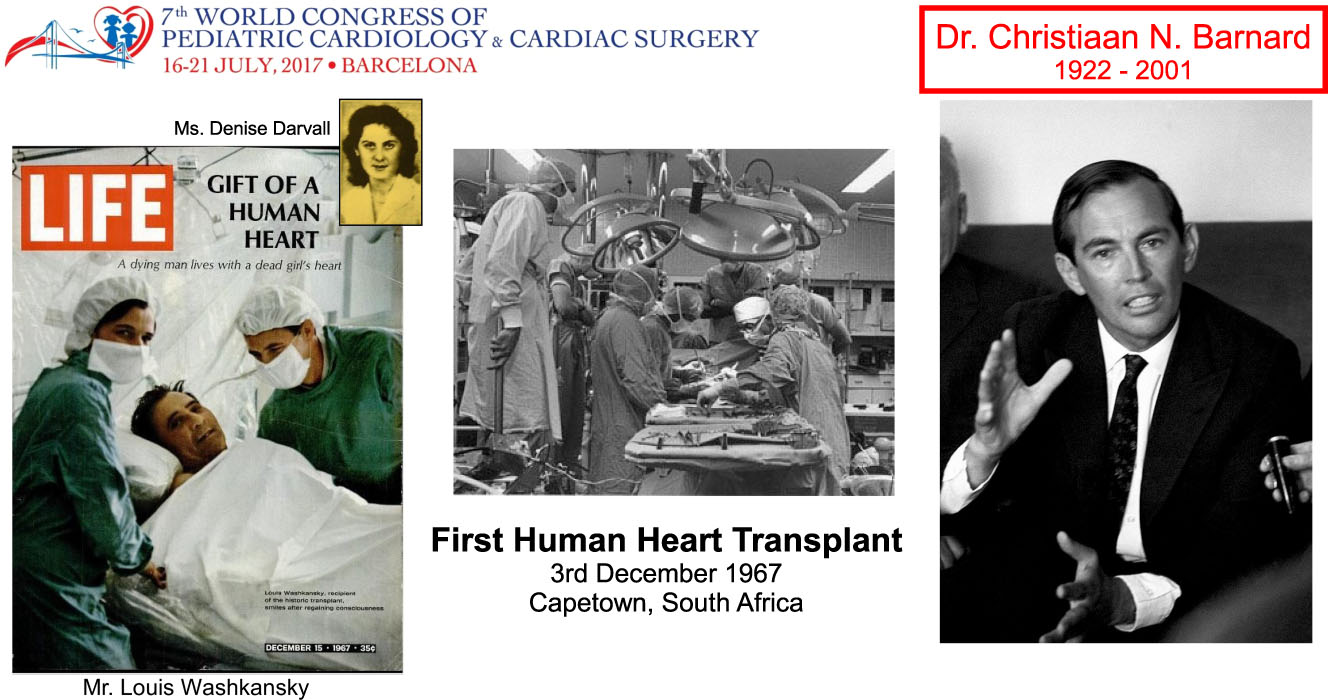All we know is still infinitely less than all that remains unknown.
William Harvey (1578–1657)
The 2017 World Congress of Pediatric Cardiology and Cardiac Surgery (WCPCCS 2017) was held in Barcelona, Spain, from 16 to 21 July, 2017. In preparation for this congress, which itself promised to be a significant historic initiative, the authors, on invitation of the organising committee, took the initiative to nominate the most important events that have shaped our speciality. The history of paediatric cardiology is rich and fascinating. However, it is fair to say that our own era of complex diagnostic imaging, sophisticated intensive care, and neonatal open-heart surgery comprises a very small portion of the timeline (Fig 1). If one were to take the work of Galen (de Curandi, c. 162 AD) as time 12:01 AM in a single day and the WCPCCS 2017 as midnight, then cardiopulmonary bypass would not appear until 11:26 PM. The Raskind septostomy would appear around 11:26 PM, and the Norwood operation around 11:40 PM. This brings to mind the often quoted words of Isaac Newton, who said, paraphrasing Bernard de Chartres, that “If I have seen further, it is by standing on the shoulders of giants”. This statement, to be sure, constitutes the essence of progress and discovery in any field. Yet, amidst the complexities and demands of our own careers, it is sometimes easy to overlook this fact. Our aim in undertaking this study was to document, present, and further preserve some of the key events and contributions that have brought us to the point of the 2017 World Congress. In doing so, we sought to recognise and honour the many great contributors of past and present eras, and to place our own careers in a realistic perspective. The results of the survey were tabulated and the authors prepared a presentation of the outcome in the format of a continuous “slide show”, which was displayed in various venues of the Convention Center between scientific presentations of the WCPCCS 2017.
Method
To assess the relative importance of the many contributions that have influenced our speciality, we conducted an opinion poll among paediatric cardiologists, cardiac surgeons, and cardiac intensivists, all of whom were currently working in these capacities in various parts of the world. The methodology involved writing to a selection of eminent practitioners who were known to the authors and perhaps more likely to respond (“convenience sample”). The question posed was, by intent, somewhat free form. Respondents were asked to nominate as many events, people, technologies, concepts, discoveries, and so on as they desired. The unifying thread was that the choices would be considered outstanding or seminal in the history of paediatric cardiology and cardiac surgery. No time constraints were imposed, allowing nominations from any period, including the present. No justification for the choices was required, and the responses represent personal expert opinions, which, by design, were not necessarily evidence based.
Results
In all, 86 individuals were invited to offer an opinion. From this group, there were 48 respondents (56%) for whom a breakdown is given in Figure 1. There were 28 cardiologists and intensivists – 58% of respondents – and 20 surgeons – 42% of respondents – representing 16 countries in Australasia, North America, Africa, Europe, and the Middle East. The authors collated the responses and grouped them by the number of nominations for each category. Some of the responses could have been assigned to multiple categories, but were counted only once. Nominations were grouped according to the number of times each was submitted. Ultimately, the 50 highest scoring nominations were included in the WCPCCS presentation. They were grouped as follows, and presented in alphabetical order:

Figure 1 Timeline of Pediatric and Congenital Cardiac Care, prepared by the organisers – including Jeffrey P. Jacobs, MD, Gil Wernovsky, Mitchell Cohen, and David Cooper – of the 2021 WCPCCS to be held from 19 to 24 September, 2021, in Washington, DC, United States of America (www.WCPCCS2021.org).

Figure 2 Slide show presentation displayed at the 2017 Seventh World Congress of Pediatric Cardiology & Cardiac Surgery (WCPCCS 2017), Barcelona, Spain.






















































Group I included items receiving 24 or more votes, including the following:
-
∙ Arterial switch operation
-
∙ Blalock–Taussig shunt (Blalock, Taussig, and Thomas)
-
∙ Cardiopulmonary bypass
-
∙ Echocardiographic imaging (including foetal echocardiography)
-
∙ Fontan/Kreutzer procedure and subsequent modifications
-
∙ Dr William Norwood and the Norwood Procedure
-
∙ Rashkind atrial septostomy
-
∙ Prostaglandin
Group 2 included items receiving 15–21 votes, including the following:
-
∙ Dr Robert Anderson (nomenclature and anatomic concepts)
-
∙ Dr Philipp Bonhoeffer and transcatheter pulmonary valve replacement (over all other interventional catheter procedures)
-
∙ Cardiac critical care as a discipline
-
∙ Computer technology
-
∙ Databases (STS, PHYS, PC4, IMPACT)
-
∙ Digitisation of cardiac images
-
∙ Electronic health records
-
∙ Foetal echocardiography
-
∙ Interventional catheterisation, including atrial septal defect closure, persistent ductus arteriosus closure, balloon valvotomy, all types of balloon dilations, and all types of stents
-
∙ Mustard and Senning procedures
-
∙ Persistent ductus arteriosus ligation
-
∙ Dr Richard and Dr Stella Van Praagh (nomenclature and anatomic concepts)
Group 3 included items receiving 10–14 votes, including the following:
-
∙ Ablation of accessory pathways
-
∙ Cardiac catheterisation for haemodynamics and angiography
-
∙ Cardiac MRI and CT
-
∙ Cardiac transplantation
-
∙ Coarctation repair (Dr Clarence Crafoord)
-
∙ Cross-circulation for support in cardiac surgery
-
∙ Dr Aldo Castaneda
-
∙ Dr C. Walton Lillehei’s multiple contributions
-
∙ Extracorporeal membrane oxygenation
-
∙ Implantable cardiac pacemakers and defibrillators
-
∙ Genetics and genomics and the secondary heart field
-
∙ Nitric oxide
-
∙ Surgery for the neonate (early correction of CHD)
-
∙ Ventricular assist devices, especially Berlin Heart
Group 4 included items receiving five to nine votes, including the following:
-
∙ Adult CHD as a discipline
-
∙ Dr Kurt Amplatz
-
∙ Dr Leonard Bailey
-
∙ Cardioplegia
-
∙ Channelopathies
-
∙ Deep hypothermic circulatory arrest
-
∙ Dr Marc de Leval
-
∙ Electrocardiography
-
∙ Dr Paul Gillette
-
∙ Heparin
-
∙ Implementation of clinical trials in CHD (various)
-
∙ Dr James Lock
-
∙ Mechanical and biological prosthetic heart valves
-
∙ Dr Alexander Nadas
-
∙ “Natural History Study” of CHD
-
∙ Neurodevelopmental outcome analysis
-
∙ Paediatric cardiac nursing as a discipline
-
∙ Pulmonary hypertension management
-
∙ Dr Giancarlo Rastelli (the Rastelli operation and right ventricle to pulmonary artery conduits)
-
∙ Sir Donald Ross and the pulmonary autograft procedure
-
∙ Sir William Harvey
-
∙ Stem cells in heart disease
-
∙ Transoesophageal echocardiography
An additional 215 items received at least one vote. The categories of nomination, speaking broadly, can be grouped as follows: individuals (9), operations (8), specific types of interventional cardiologic procedures (7), medications (4), technology (7), imaging (6), organisation of care (4), nomenclature (1), support systems for surgery (4), concepts (3), basic science (4), and clinical outcome research (2).
Finally, during the 2017 WCPCCS, the organisers – including Jeffrey P. Jacobs, Gil Wernovsky, Mitchell Cohen, and David Cooper – of the 2021 WCPCCS to be held from September 19 to 24, 2021, in Washington, DC, United States of America (www.WCPCCS2021.org), presented a timeline of important events in the history of congenital and paediatric cardiac care, which can be found as Figure 1. A color version of the timeline is available at WCPCCS2021.org
Discussion
Many of the attendees of the Congress have expressed an interest in obtaining a copy of the presentation, so the authors, in conjunction with Cardiology in the Young, have decided to make the entire work available (Fig 2). The presentation is protected by international copyright but can be freely used for academic and educational purposes. Permission to reproduce any of the material in the presentation can be requested from the authors. The slide show is reproduced here in the exact format presented at the WCPCCS in Barcelona.
Conclusion
There appears to be considerable interest in our heritage, as evidenced by the number of recent requests for this presentation, as well as the interest expressed during the WCPCCS for both access to the presentation and copies of the timeline. The task of ordering events by their importance is clearly subjective and probably impossible to complete in a simple survey of this type. We clearly recognise the importance of many other people, technologies, procedures, disciplines, and much more. These contributions constitute the “shoulders of giants” on which we currently stand. Nonetheless, it is particularly interesting to note the diversity of responses from what could be considered a rather homogeneous group of paediatric cardiac practitioners. The authors hope, however, that the responses will be thought provoking, and a tribute to those who have contributed in ways that we will continue to recognise and honour.


























































